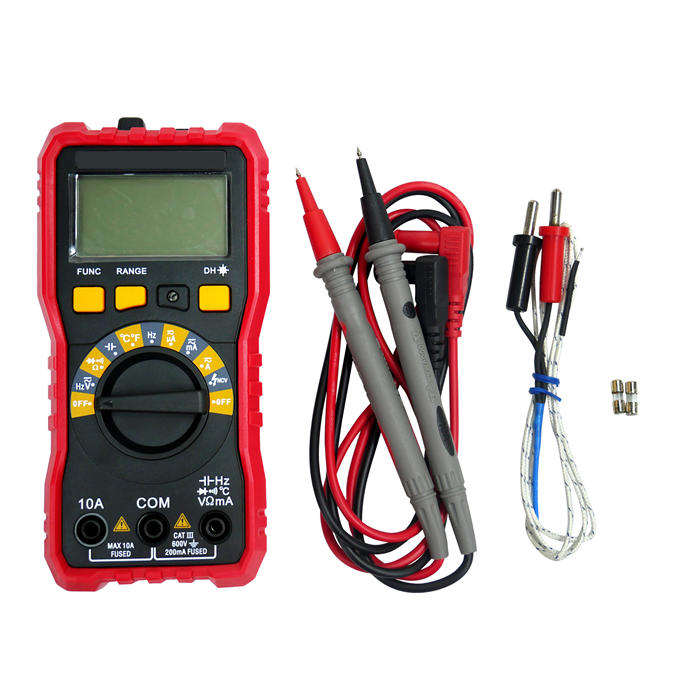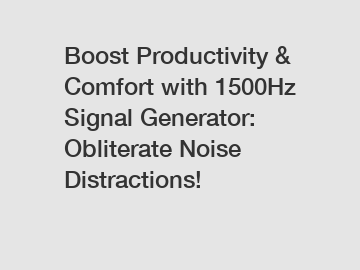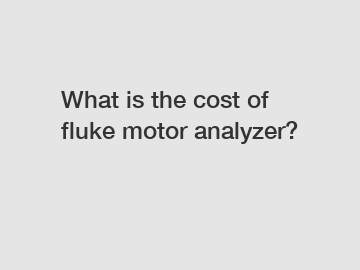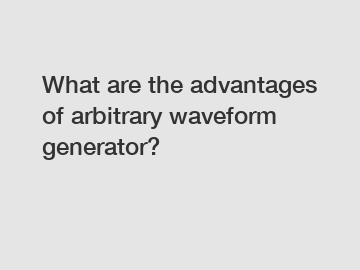Can I measure both AC and DC with a Digital Multimeter?
In the realm of electrical measurements, the Digital Multimeter stands as a versatile and indispensable tool. It's a powerhouse when it comes to gauging various electrical parameters, but a common query often arises: Can a Digital Multimeter measure both Alternating Current (AC) and Direct Current (DC)? In this comprehensive guide, we unravel the intricacies surrounding this question and provide a definitive answer.
What is a Digital Multimeter?
A Digital Multimeter is an electronic tool designed to measure multiple electrical parameters with high precision. It typically encompasses functions such as voltage, current, and resistance measurements. The evolution from analog to digital has empowered these devices with enhanced accuracy and user-friendly interfaces.

AC and DC Measurement Capabilities
Measuring Alternating Current (AC)
SIND5960A digital multimeter is adept at measuring AC. By selecting the appropriate setting on the dial, the device can accurately display the voltage of AC circuits. This is crucial in assessing the power supplied by outlets, ensuring compatibility with various appliances.
Measuring Direct Current (DC)
Equally proficient in the DC realm, Digital Multimeters offer precise measurements of direct voltage and current. This capability proves invaluable when troubleshooting electronics, checking battery voltages, or assessing the health of DC-powered systems.
Setting the Stage: How to Measure AC with a Digital Multimeter
Step 1: Selecting the AC Voltage Setting
Begin by turning the dial to the AC voltage setting. This ensures that the Digital Multimeter is calibrated to measure alternating current accurately.
Step 2: Connecting the Probes
Gently insert the probes into the appropriate ports on the Digital Multimeter. The red probe goes into the VΩmA port for voltage measurements.
Recommended article:Measurement & Analysis Instruments
Step 3: Probing the Circuit
Revolutionizing Navigation: The Laser Gyroscope Unveiled
Quartz Flexible Accelerometer in Drilling: Enhancing Efficiency and Safety
Benefits of the Motor and Propeller Test Kit
What Are The Features And Specifications of The Multihead Weigher?
Three Phase Power Analyzer: Accurate Measurements for Electrical Systems
Spherical vs. Aspheric Lenses: A Clear Perspective
Carefully touch the probe tips to the AC circuit being measured. Ensure a secure connection to obtain an accurate reading.
Unraveling DC Measurements with Precision
Step 1: Choosing the DC Voltage Setting
Rotate the dial to the DC voltage setting to prepare the Digital Multimeter for measuring direct current.
Step 2: Connecting the Probes
As with AC measurements, insert the probes into the corresponding ports on the DMM. The red probe should be in the VΩmA port for accurate DC voltage readings.
Step 3: Probing the Circuit
Establish a secure connection by touching the probes to the DC circuit. The Digital Multimeter will deliver an instantaneous and precise measurement.
Conclusion
In conclusion, the answer to the question "Can I measure both AC and DC with a Digital Multimeter?" is a resounding yes. Digital Multimeters are versatile instruments designed to tackle the complexities of both Alternating Current and Direct Current measurements with unparalleled accuracy.
Whether you're a seasoned electrician or a DIY enthusiast, harnessing the power of a Digital Multimeter empowers you to navigate the intricacies of electrical systems confidently. Understanding how to measure AC and DC with precision ensures that you can troubleshoot, diagnose, and maintain electrical components effectively. For more details please contact SINODA
Additional resources:What is the difference between chromatic and achromatic lens?
Types of Optical Domes: A Comprehensive Guide
The Science Behind Engine Test Benches: Unlocking Performance and Efficiency
How do Optical Glass Domes Protect Sensitive Equipment or Components?
How does a MEMS IMU work?
Applications of Custom Optical Windows
Know the Features of the Multihead Weigher?
46
0
0
Related Articles
-
91
0
0
-
29
0
0
-
48
0
0
-
38
0
0
-
Unlocking Affordable Spectrum Analysis: Lowcost Solutions Decode Wireless Signals
Unlocking Affordable Spectrum Analysis: Low-Cost Solutions Decode Wireless Signals.
41
0
0
-
33
0
0
-
Unlocking the Secrets of Spectrum Analyzer Signal Generator
Unlocking the Secrets of Spectrum Analyzer Signal Generator.
30
0
0








Comments
All Comments (0)